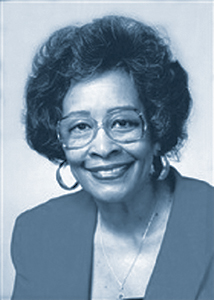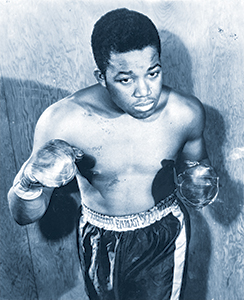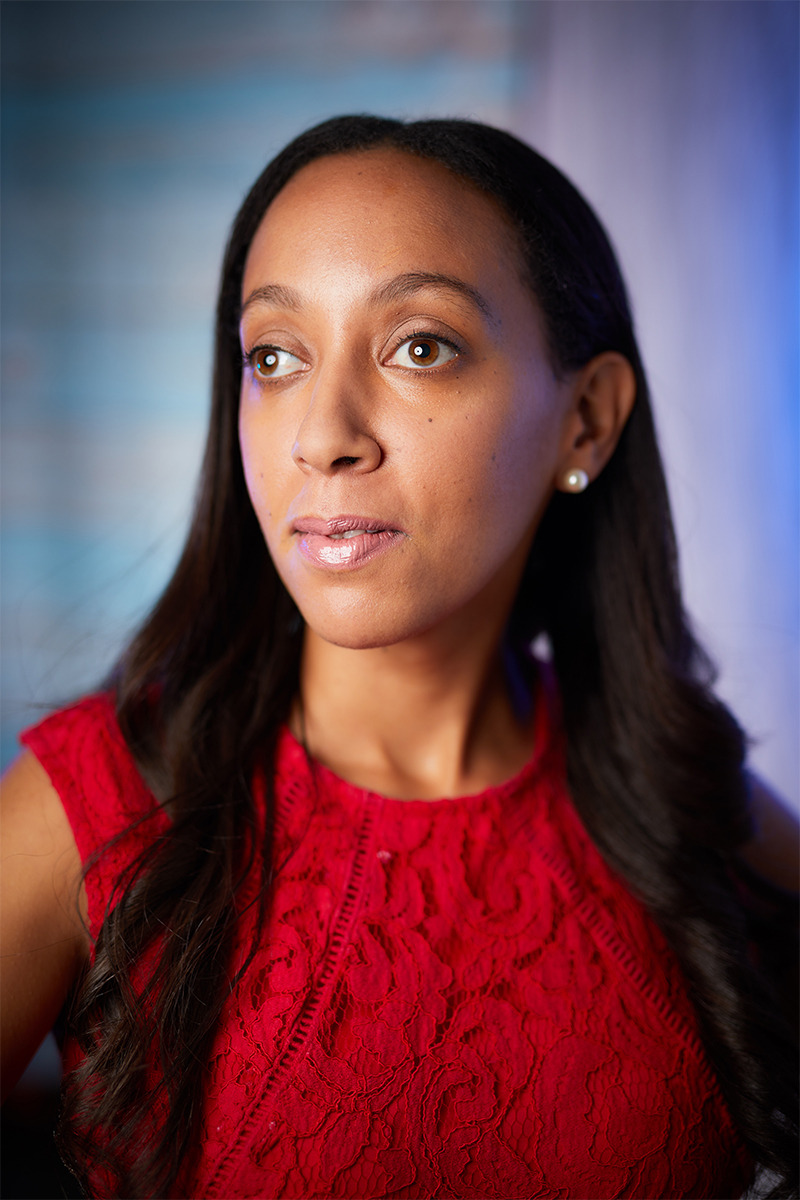As the month of February comes to an end and we begin March, we share another reminder that Black History month is not the only month to celebrate Black History, but rather the study and celebration of Black History should take place month after month, year after year. Given that Deaf History is celebrated between March 13th to April 15th, 2023, which commemorates the achievements of those who are Deaf or deaf, we saw it to be important to honor the intersections of Black History and Deaf History this month.
To begin, it is important to note the following distinctions between Deaf and deaf:
- Deaf with a capital “D” is used to describe or identify people who have been deaf throughout their lives or before they started to learn to talk, known as pre-lingually Deaf. The Deaf community tends to communicate in sign language as their first language, such as American Sign Language (ASL) or Black ASL. As such, Deaf individuals share a common culture and sense of identity based on a shared language and their linguistic community.
- deaf with a lowercase “d” is used to describe or identify people who experience mild to severe audiological conditions of hearing. Some individuals with hearing impairments or who are deaf identify as disabled.
The celebration of National Deaf History Month transpired from two deaf employees at the Martin Luther King Jr. Memorial Library in Washington, D.C., who started to teach their colleagues sign language on March 13, 1996. This started a movement to develop a deaf awareness week celebrated by the library. Later on, The National Association of the Deaf (NAD) joined the movement and celebration and suggested that Deaf History be honored as a month-long holiday. Since 1997, March 13 through April 15 is designated time to learn, honor and celebrate National Deaf History Month. Although National Deaf History Month is not a federally recognized holiday, D/deaf organizations have continued to advocate for a federal proclamation of National Deaf History Month by the White House and/or Congress. In honoring the intersectionality of Black History and D/deaf History, we outline key terms, share a brief history of the intersections of Black and D/deaf identities, and highlight Black D/deaf historical figures.
Key Terms:
Ableism – Discrimination or prejudice, whether intentional or unintentional, against persons with disabilities.
Audism - As described by deaf activists, is a form of discrimination, prejudice, or lack of willingness to engage with D/deaf people. Tom Humphries coined the term in his dissertation entitled, “Communicating Across Cultures Deaf-Hearing and Language Learning.” In his dissertation, he defines audism as “the notion that one is superior based on one's ability to hear or behave in the manner of one who hears.”
Accommodation – An accommodation is a modification, whether in the classroom or in the workplace, that ensures that a person with a disability can complete required tasks and functions.
Accessible – Accessible spaces and programs are made to be inclusive and generally don’t require accommodations. Accessibility is not only in response to disability.
Americans with Disabilities Act (ADA)– Federal civil rights law designed to ensure that persons with disabilities are fully included in society and protected from discrimination.
Identity First Language (IFL) - Identity first language, such as saying “disabled person,” emphasizes the disability as an identity. IFL came from a countermovement in response to person's first language by some disabled people who recognize their disability as part of who they are, not something to distance themselves from. Some disabled people prefer IFL.
Intersectionality - A critical theoretical lens, informed by Black feminism, which highlights the intersections of multiple and interconnected axes of oppression and privilege. Intersectional theorists consider an individual's multiple identities related to race, gender, ethnicity, religion, ability, education, sexual orientation, sexuality, class, first language, citizenship, and age to critique and challenge multiple forms of oppression that exist simultaneously.
Mobility Aid - A device that assists a person in moving around. They can include wheelchairs, walkers, crutches, canes, braces, and other similar devices.
Person First Language (PFL) – Person first language, such as saying “person with a disability,” emphasizes that the person is more important than the disability. PFL was developed as a way of showing respect. Some people with disabilities prefer PFL.
Person with a Hearing Disability/ Hearing-Impaired and/or d/Deaf person – Refers to a person who has an impairment affecting hearing. Some individuals with hearing impairments or who are deaf identify as disabled. Others, particularly those who use sign language, do not identify as disabled and prefer the term “Deaf” as a cultural identity, representing themselves as part of a linguistic community.
Universal Design - refers to the design and composition of an environment so that it can be accessed, understood and used to the greatest extent possible by all people regardless of their age, size, ability, or disability.
Brief History of the Intersections of Black History and D/deaf History
In a predominately hearing and white society, Black D/deaf individuals often experience doubly or triply-compounding oppression across audism, racism, and sexism. Historical co-existing oppressions for those in the Black and D/deaf community were particularly evident throughout the segregation era, in which Black D/deaf individuals were often excluded from both Deaf communities and their Black communities. Specifically, Black Organizations such as the National Association for the Advancement of Colored People (NAACP), the Southern Christian Leadership Conference (SCLC), and the National Urban League did not have accessible communication efforts that included D/deaf people within their leadership and organizations. Black D/deaf people also simultaneously experienced exclusion and discrimination from the white deaf community, which prohibited Black individuals from joining their organizations and clubs. For instance, the National Association of the Deaf (NAD) prohibited Black members until 1965, a year after the passage of the Civil Rights Act of 1964.
Furthermore, from 1864 to 1950, Black D/deaf students were also banned from Gallaudet College, now known as Gallaudet University, a university for the education of the deaf and hard of hearing. The college had its first Black graduate, Andrew J. Foster, in 1954, which was the same year of the Brown vs. Board of Education Supreme Court decision. Throughout the history of society and education, Black D/deaf students were excluded from their white D/deaf peers and predominately white deaf school environments, which lead them to develop their own form of American Sign Language (ASL), known as Black ASL, which is a distinctive dialect and language.
Through advocacy efforts of the Black D/deaf community, there was a new conference committee formed in 1981, which was organized in Washington D.C. at Howard University to recognize the experiences of Black D/deaf individuals and to foster community among them. A tremendous outcome of the conference was the establishment of the organization National Black Deaf Advocates (NBDA), which now has local chapters throughout Washington D.C., Clevland, Philadelphia, New York City, Chicago, Detroit, Memphis, and Atlanta, amongst others. Today, NBDA membership includes Black Deaf and Hard of Hearing; parents of Black Deaf and Hard of Hearing children; professionals who work with Black Deaf and Hard of Hearing youth and adults; sign language interpreters; people of color; and other interested individuals and organizations. NBDA also works in conjunction with more than 30 Local BDA Chapters across the country.
At the intersection of Black History and D/deaf history, we can learn the importance of honoring individuals who experience double or more minoritization towards cultivating advocacy efforts that simultaneously challenge compounding forms of oppression, such as audism, sexism, and racism, to promote long-lasting and transformational social justice, equity, and liberation.
Black D/deaf Historical Figures:

Dr. Shirley Jeanne Allen is the first Black deaf-woman in the U.S. to earn a doctoral degree. Born in 1941 in Nacogdoches, Texas, Allen became deaf at the age of 20 following a bout of typhoid fever. At the time, she was studying music at Jarvis Christian College and continued to play the piano for audiences despite her hearing loss. She went on to earn a bachelor’s degree in 1966 from Gallaudet University and a master’s degree in 1972 from Howard University. She then earned her doctorate in education from the University of Rochester in 1992. She was a professor at the Rochester Institute of Technology for 28 years before retiring in 2001. Her accomplishments include being featured in multiple editions of Who’s Who of Professional Women, a lifetime achievement award from Who’s Who in America, and a place in Jarvis Christian College’s Pioneer Hall of Fame.

Eugene Hairston grew up to become the first deaf African American boxer, having suffered spinal meningitis as a young child. Eugene was given the nickname “Silent Hairston” by other people, but he proudly claimed it because he said it was part of his identity. Hairston was born in Harlem, New York, in 1929 and attended schools for deaf children until the age of 15, at which point he dropped out to earn money for his family. After working various jobs, he set his sights on becoming a professional boxer and began attending a New York fighting club. Trainers at the club initially overlooked Hairston because of his hearing loss until they witnessed his exceptional skills in the ring. He soon went pro, winning a total of 45 fights and defeating two world champions before he reached the age of 22. Eugene eventually retired from boxing due to injury at the age of 22 and went on to work with United Parcel Service (UPS).
Watch this ASL video to learn more about Eugene Hairston: https://www.dailymoth.com/blog/black-deaf-history-eugene-silent-hairston.

Haben Girma is the first Deafblind person to graduate from Harvard Law School and is a human rights lawyer advancing disability justice. President Obama named her a White House Champion of Change. Haben believes disability is an opportunity for innovation, and she teaches organizations the importance of choosing inclusion. The New York Times, Oprah Magazine, and TODAY Show featured her memoir, Haben: The Deafblind Woman Who Conquered Harvard Law. Haben was born and raised in the San Francisco Bay Area, where she currently lives. Her memoir takes readers on adventures around the world, including her parents’ homes in Eritrea and Ethiopia, building a school under the scorching Saharan sun, training with a guide dog in New Jersey, climbing an iceberg in Alaska, fighting for blind readers at a courthouse in Vermont, and talking with President Obama at The White House. Learn more about her book here.
Rowan Resources
Rowan University Office of Accessibility Services: The Office of Accessibility Services provides accommodations and assistance to students with various documented disabilities in accordance with Section 504 of the Rehabilitation Act of 1973 and the Americans with Disabilities Act (ADA) of 1990.
The Rowan American Sign Language (ASL) Club: The Rowan ASL Club is a unique, fun, and interesting group to join! We focus on learning new signs each week, participating in activities, and getting involved in the Deaf community. It is a great way to meet new people on campus and learn about a new culture. No experience is required. All are welcome to join!
Contact Information
Email: aslclubrowan@gmail.com
Instagram: @rowanaslclub
For all student complaints involving discrimination and harassment, please visit go.rowan.edu/titlevi.
Resources for Continued Learning:
Advocacy Groups and Organizations
The Black Deaf Ph.D. Project, LLC is an inspirational cause with the goal of understanding the experiences and challenges that Black deaf people still navigate. This includes systemic forms of oppression (i.e., racism, audism, sexism, and classism) within higher education and how these oppressions influence their college choice, access, experiences, and success.
National Black Deaf Advocates is the official advocacy organization for thousands of Black Deaf and hard of hearing people in the United States. Black deaf leaders were concerned that Black Deaf and hard of hearing Americans are not adequately represented in leadership and policy decision-making activities affecting their lives so they established NBDA in 1982.
Black Deaf Progressive Movement the goal of the Black Deaf Progressive Movement (BDPM) is to assure that the group engages in Community Advocacy and dialogue about such topics pertaining to Politics, Education, Social Issues, Mental Health, Deaf Talent of Color in Film and Television, Accessibility, Black Deaf Businesses, and the Economic Equality of Rights and Advocacy of all Persons. Our aim is to find ways to reach solutions, such as community accountability and unpacking and dismantling race-based discrimination, oppression, and audism in our communities.
Resources for Continued Learning
Articles
Insight to Diversity - National Deaf History Month - https://www.insightintodiversity.com/national-deaf-history-month/
The Intersection of Black History and Disability Inclusion -
Black Deaf Culture Through the Lens of History- https://dcmp.org/learn/366-black-deaf-culture-through-the-lens-of-history
Books
- Haben: The Deafblind Woman Who Conquered Harvard Law, by Haben Girma
- Black and Deaf in America, Are We That Different?, by Ernest Hairston and Linwood Smith
- Sounds Like Home: Growing Up Black and Deaf in the South by Mary Herring Wright
- Black Deaf Students: A Model for Educational Success by Carolyn Estelle Williamson
- Roar of Silence: Trial & Triumph Through Deaf by Kenny and Kenneth Walker
- "The Hidden Treasure of Black ASL: Its History and Structure by Carolyn McCaskill, Ceil Lucas, Robert Bayley, and Joseph Christopher Hill